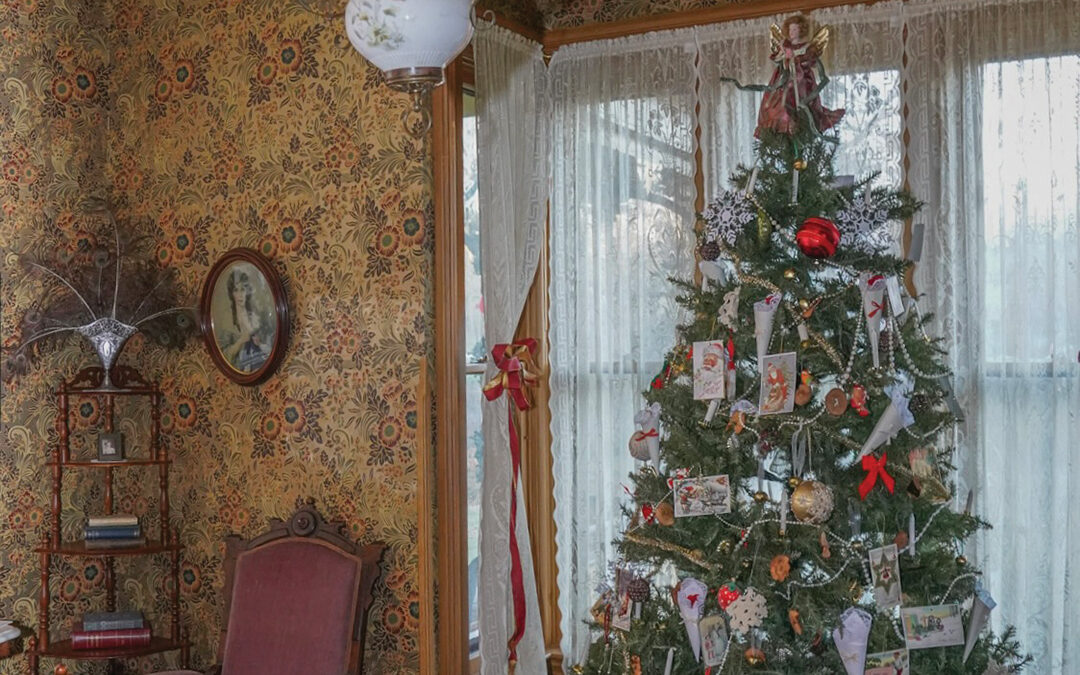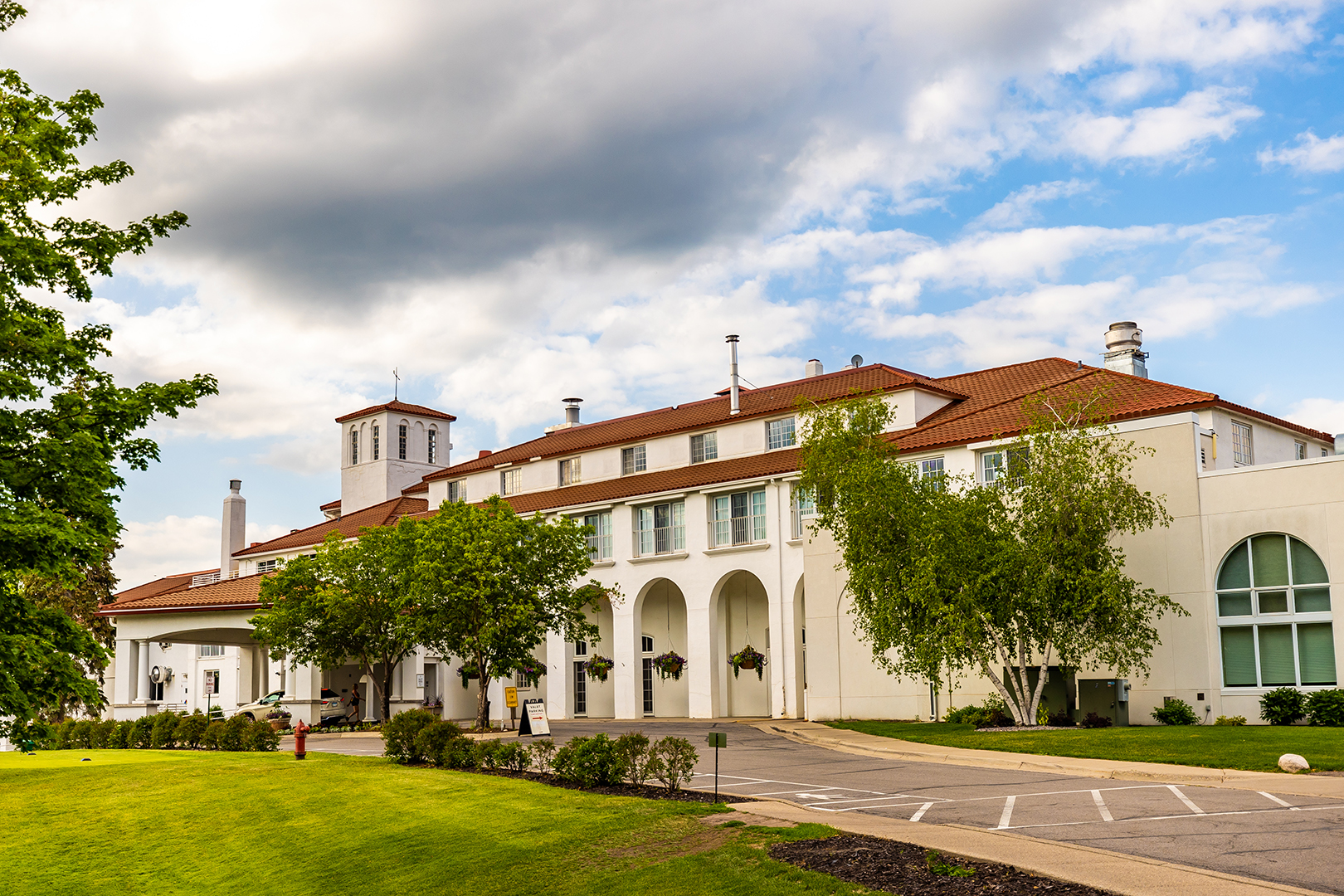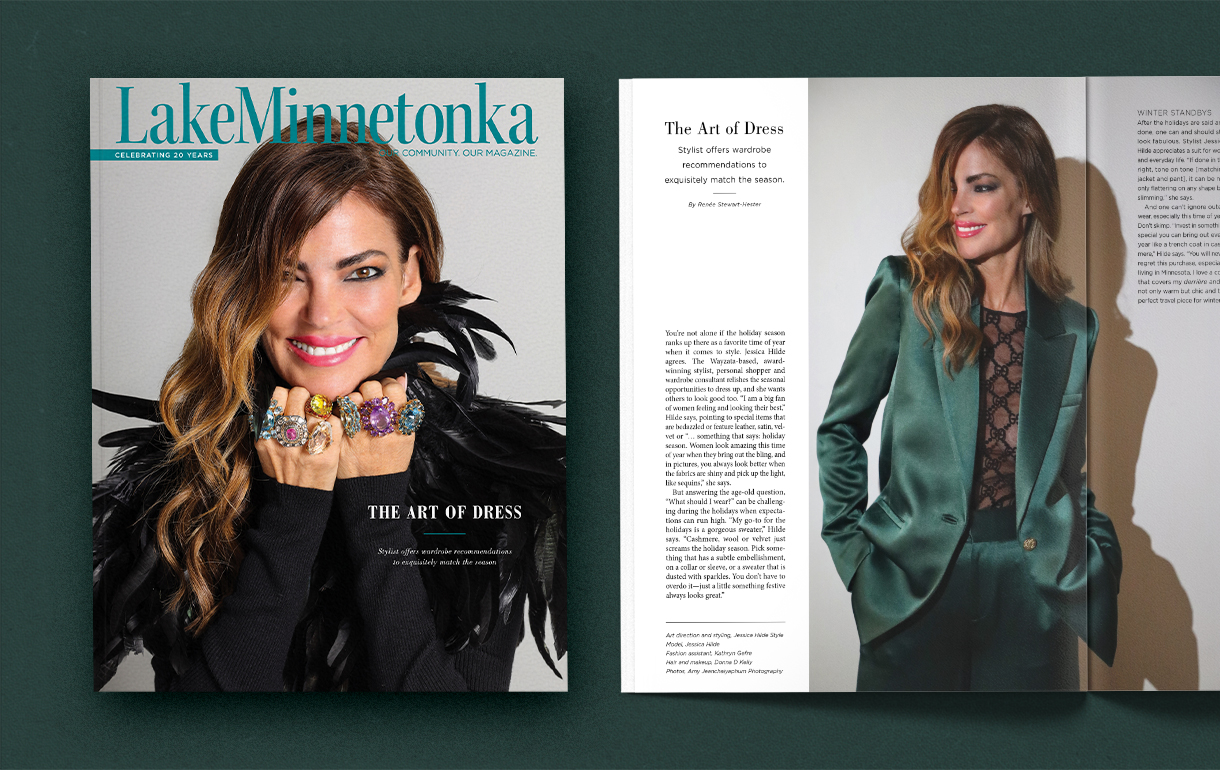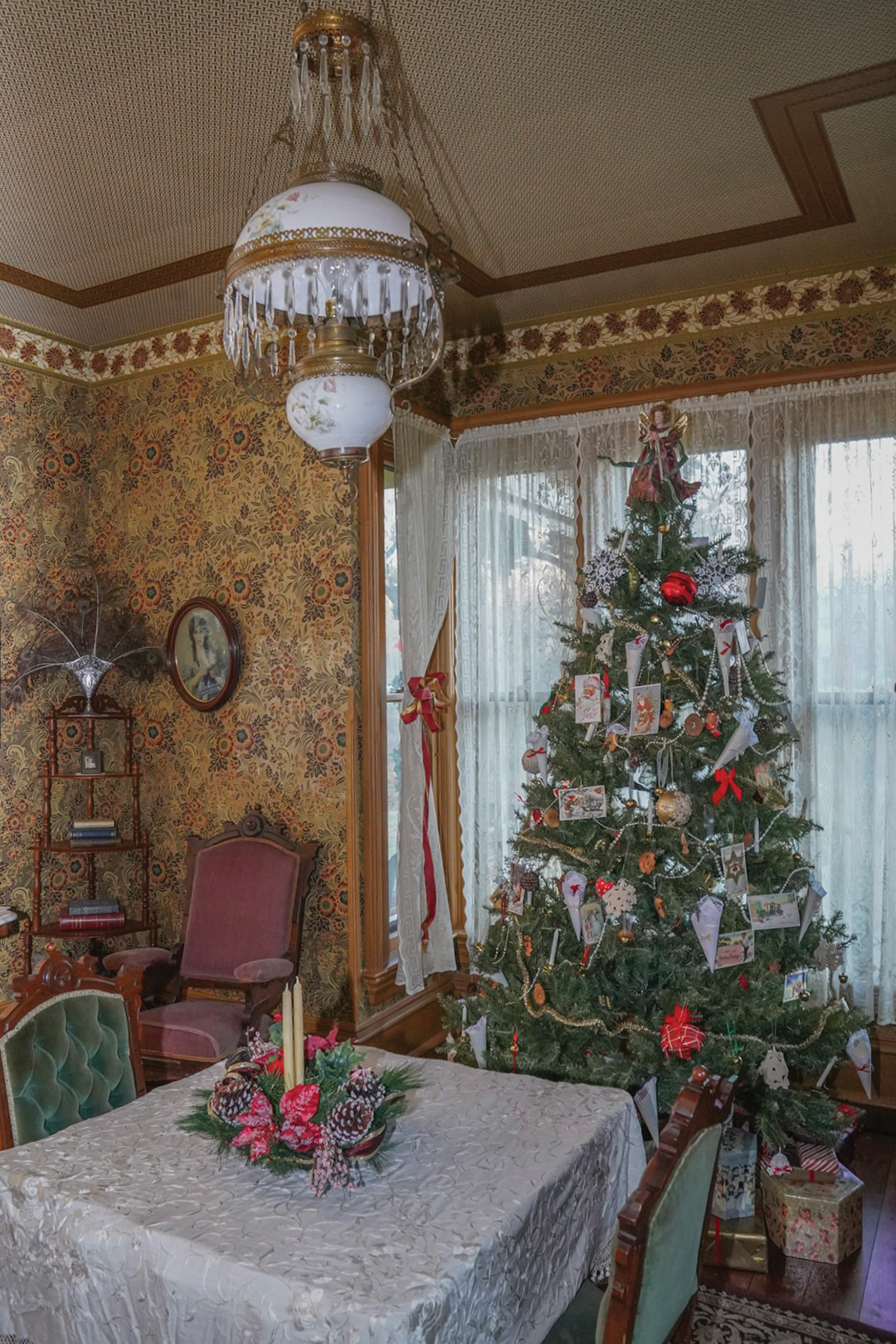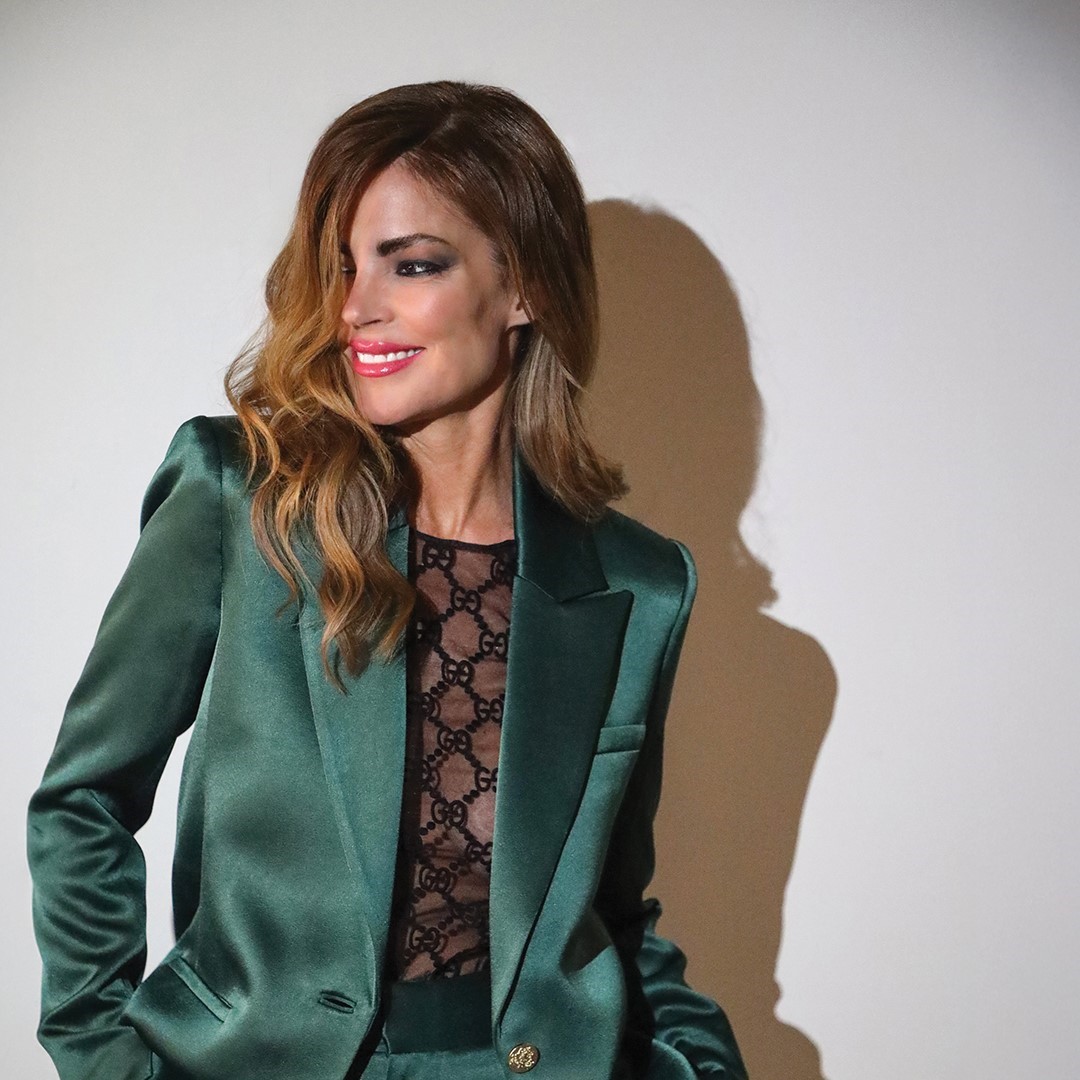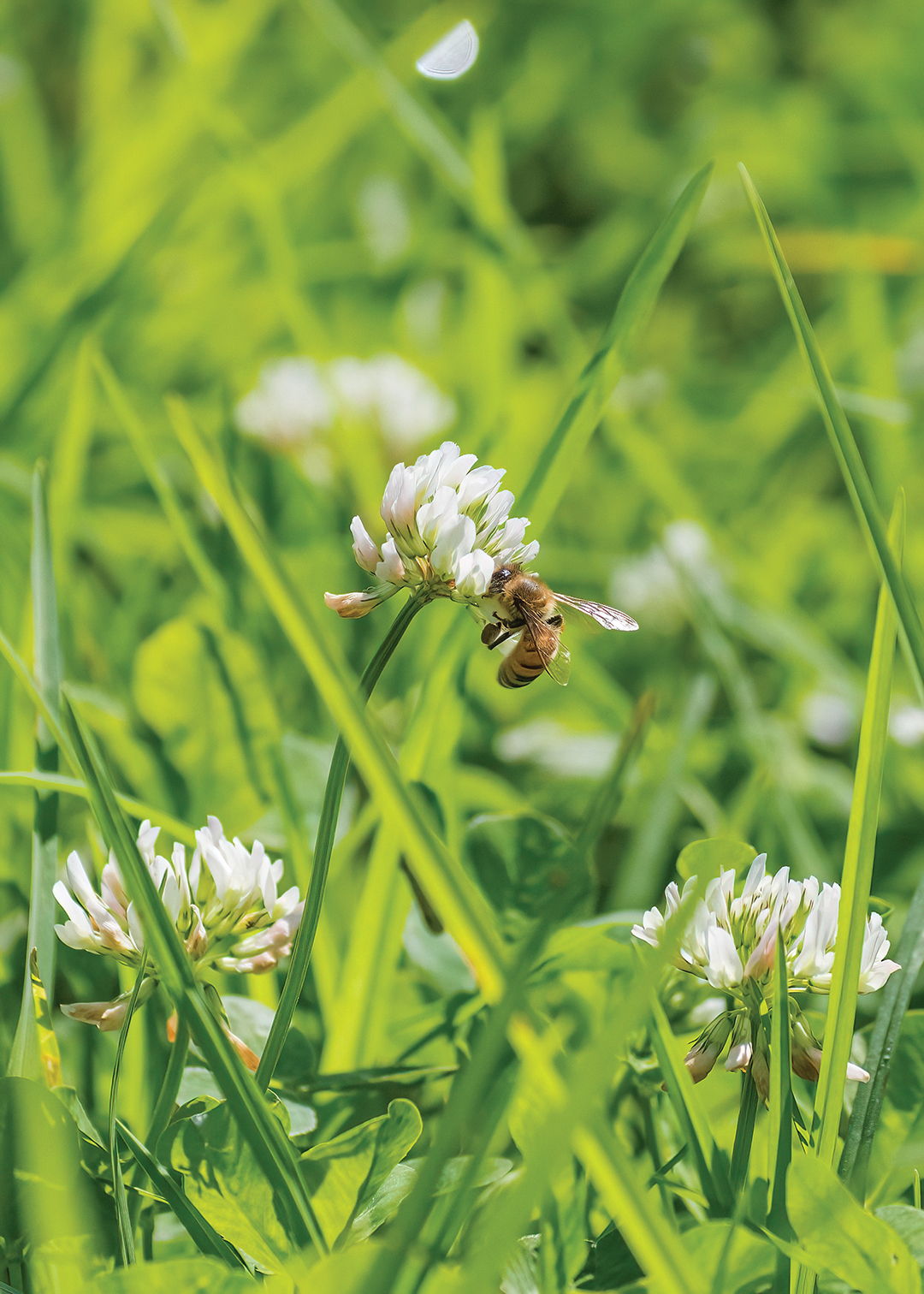
iStock/Merrillie
Get tips for cultivating a naturally impactful lawn.
Raise your green thumbs if you’ve heard or read about bee lawns. We were curious about the concept, so Wayzata’s Brian Bade, a master gardener, educated us in on the ins and outs of developing a bee lawn and cleared up some notions about No Mow May.
Bade explains that bee lawns feature flowering plants (commonly Dutch white clover, creeping thyme or self-heal) as well as turf grasses, with several benefits to bees and pollinators. Those benefits include: floral beauty; increased resilience to extreme seasonal temperatures and drought; less fertilizing, mowing and watering; and natural diversity of forage for pollinators.
Bade installed a bee lawn a few years ago. “I was curious to see how it was going to establish and look in a few years,” he says. As a master gardener, he wanted to have an example of a bee lawn for the Hennepin County Learning Garden Tour. Perhaps most importantly, Bade wanted to benefit pollinators. “A bee lawn provides them with supplemental nectar and pollen sources in the spring and summer months,” he says.
For people considering establishing a bee lawn, note that one doesn’t typically devote an entire lawn to it. “A bee lawn holds up to some light foot traffic, but it isn’t going to hold up well as a recreational planting,” Bade says. “What I mean by that is, if a space is needed to play baseball, football, soccer, etc., a yard made up entirely of bee lawn probably isn’t the best choice. However, if turf grass isn’t going to be used for recreation, or the turf in some areas of a property isn’t used as heavily as others, a bee lawn may be worth exploring. It all depends on the needs of the homeowner.”
Why Say Yes to No
There is a fair amount of confusion when it comes to No Mow May. “There is a misconception that having a bee lawn is taking the concept of No Mow May literally and not maintaining your turf grass for an extended period of time,” Bade says. “That is not the purpose of No Mow May, and not maintaining your turfgrass for a month has some drawbacks.”
“The basic idea of No Mow May is to increase the availability of flowers in spring as bees emerge,” Bade says. “For example, if a homeowner gives dandelions a chance to bloom but mows before they go to seed, it can provide resources for pollinators while not increasing the spread of the dandelion.”
What should one consider before joining the No Mow May bandwagon?
“Removing more than one third of the length of turfgrass at a time can drastically reduce its health,” Bade says. “Letting grass grow for a month before mowing could result in grass that is 10–12 inches long, and not many residential mowers have a setting to properly cut at a 6- to 8-inch height.”
In addition, stressing lawns can result in the need to increase water and fertilizer to bring it back to health and lead to increased weed development. To note: Flowering lawn species in May tend to be dandelions and Creeping Charlie, which are not high quality forages and can become a management issue.
“Instead of No Mow May, Mowing Correctly or Mowing Less are probably better slogans,” Bade says. “Mowing at a higher height requires less frequent mowing and water requirements. Four inches and above is recommended during the summer months, and don’t cut more than one third of the grass blade length at a time. Finally, consider tolerating some traditional weeds like clover and dandelions.”
Bee Aware
“The University of Minnesota Extension, Bee Lab and Turfgrass Science Program are all great resources to research how to establish and maintain a bee lawn,” Brian Bade says.
For additional information, visit extension.umn.edu, beelab.umn.edu and turf.umn.edu.


